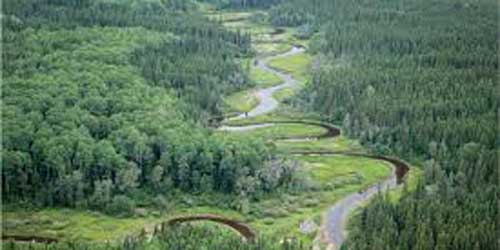Do you know facts about forests that Forests provide fuel, timber, paper, resins, varnishes, dyes, rubber, kapok and much more besides.Softwood is timber that comes from coniferous trees such as pine, larch, fir, and spruce. 75-80% of the natural forests of northern Asia, Europe, and the USA are softwood.
Useful Facts About Forests
- In vast plantations, fast-growing conifers are set in straight rows so they are easy to cut down.
- A tropical rainforest has more kinds of trees than any other area in the world.
- The signs of pollarding are racy to see in these trees in winter when the leaves are gone.
- Hardwood is timber from broad-leaved trees such as oak. Most hardwood forests are in the tropics.
- Hardwood trees take over a century to reach maturity.
- Tropical hardwoods such as mahogany are becoming rare as more hardwood is cut for timber.
- Do you know facts about forests that Pollarding is cutting the topmost branches of a tree so new shoots grow from the trunk to the same length.
- Coppicing is cutting tree stems at ground level to encourage several stems to grow from the same root.
- Half the world’s remaining rainforests will be gone by 2020 if they are cut Mown at the current rate.
- Every year the world uses 3 billion cubic metres of wood – a pile as big as a football stadium and as high as Mt Everest.
- Tropical rainforests are the richest and most diverse of all animal habitats.
- Most animals in tropical rainforests live in the canopy (treetops), and are either agile climbers or can fly.
- Canopy animals include flying creatures such as bats, birds and insects, and climbers such as monkeys, sloths, lizards, and snakes.
- Many rainforest creatures can glide through the treetops — these include gliding geckos and other lizards, flying squirrels and even flying frogs.
- Do you know facts about forests that Year-round rainfall and warm temperatures make rainforests incredibly lush, with a rich variety of plant life.
- Like the other 41 species of the bird of paradise group, the king bird lives in rainforests. In courtship, the male vibrates his wings for display.
- Some tree frogs live in the cups of rainwater that are formed by some plants growing high up in the trees.
- Antelopes, deer, hogs, tapir and many different kinds of rodent (rats and mice) roam the forest floor, hunting for seeds, roots, leaves and fruit.
- Beside rivers in Southeast Asian rainforests, there may be rhinoceroses, crocodiles, and even elephants.
- Millions of insect species live in rainforests, including butterflies, moths, bees, termites and ants. There are also many spiders.
- Rainforest butterflies and moths are often big or vividly coloured, including the shimmering blue morpho of Brazil and the birdwing butterflies.
- Rainforest birds can be vividly coloured too, and include parrots, toucans acid birds of paradise
- Do you know facts about forests that Forests of broad-leaved, deciduous trees grow in temperate regions where there are warm, wet summers and cold winters – in places like North America, western Europe, and eastern Asia.
- Broad-leaved deciduous woods grow where temperatures average above 10°C for over six months a year, and the average annual rainfall is over 400 mm.
- If there are 100 to 200 days a year warm enough for growth, the main trees in broad-leaved deciduous forests are oaks, elms, birches, maples, beeches, aspens, chestnuts and lindens (basswood).
- In the tropics where there is plenty of rainfall, broad-leaved evergreens from tropical rainforests.
- In moist western Europe, beech trees dominate woods on well-drained, shallow soils, especially chalkland; oak trees prefer deep clay soils. Alders grow in waterlogged places.
- In drier eastern Europe, beeches are replaced by durmast oak and hornbeam and in Russia by lindens.
- In American woods, beech and linden are rarer than in Europe, but oaks, hickories, and maples are more common.
- In the Appalachians buckeye and tulip trees dominate.
- Do you know facts about forests that there is a wide range of shrubs under the trees including dogwood, holly, magnolia, as well as woodland flowers.
- Very few woods in Europe are entirely natural; most are `secondary’ woods, growing on land once cleared for farms.
Must Read:
Wildlife Corridors – Elephant Lifeline(s) – of Coimbatore



